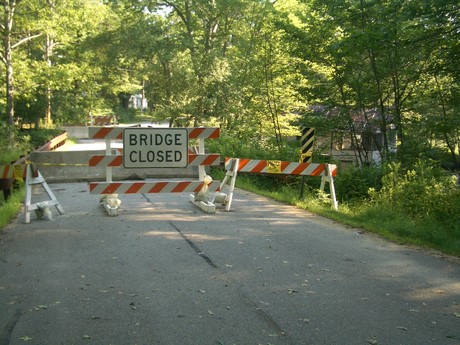The Wrack
The Wrack is the Wells Reserve blog, our collective logbook on the web.
The Wrack is the Wells Reserve blog, our collective logbook on the web.
Flooding in York County — is it becoming more common? Roads impassable, bridges washed out, basements full... the stories have become all too familiar in recent years.
 The Mother's Day storm in May 2006 seemed an anomaly till the Patriots' Day storm hit in 2007. This March, the Wells Reserve measured 16 inches of rainfall, 5 inches more than Portland's record-setting 11. The roads closed and the sump pumps hummed again.
The Mother's Day storm in May 2006 seemed an anomaly till the Patriots' Day storm hit in 2007. This March, the Wells Reserve measured 16 inches of rainfall, 5 inches more than Portland's record-setting 11. The roads closed and the sump pumps hummed again.
Hydrologists warn against the dramatic "100-year flood" label, rightly cautioning that such storm events have a one-percent chance of happening in any given year, not just once a century. So is this just a run of bad luck or is it time to adjust to a new normal?
Our climate is changing; Maine's Climate Future suggests our region will be getting wetter, with the possibility that damaging weather events will become more frequent. Nobody can be sure, but the Wells Reserve is helping prepare communities to minimize the impacts.
"Recognizing and managing water as a critical resource rather than a waste product and a problem is one of the Wells Reserve's top initiatives," says Stewardship Coordinator Tin Smith.
Wetlands moderate water levels naturally, Smith explains. Protecting and restoring coastal wetlands is a priority for the Wells Reserve, which also works across southern Maine to support permanent land conservation where it shows promise for improving ecological functioning in watersheds.
Under heavy rainfall conditions, the likelihood of flooding can be reduced if stormwater flow is slowed. Tin Smith is encouraging: "Every resident can be part of the solution by retaining natural vegetation along streams, ponds, and salt marshes." This is effective because tree leaves dampen the impact of falling rain, which drips through the canopy and often a shrub layer before touching ground. Keeping or planting trees and shrubs along waterways helps the earth absorb a slow flow of stormwater.
In contrast, rooftops, roadways, parking lots — even lawns — do little to impede precipitation on its way to streams or storm drains. In areas where impervious surfaces replace porous earth, rainwater swiftly follows the quickest course to low lands, whether that's your basement or the dip in the road between where you are and where you want to be. Limiting the extent of impervious surfaces is part of good conservation planning; it may reduce the risk of flooding and also prevents pollution of waterways leading to our estuaries and beaches.
While the Wells Reserve works with communities to encourage wetland buffers and reduce impervious surfaces, it is also constantly monitoring weather and water quality, tracking land use changes, and doing the science that will both determine climate trends and provide solutions to minimize impacts of climate change.
[Watermark 27(1): Spring 2010]